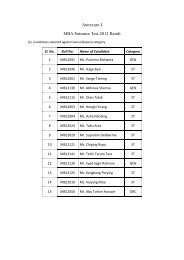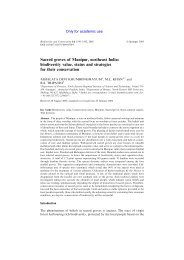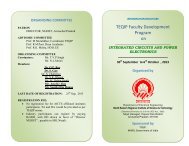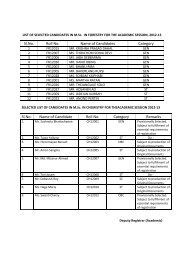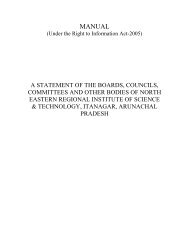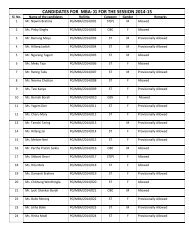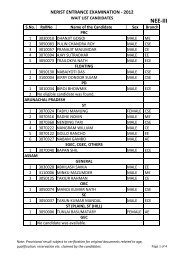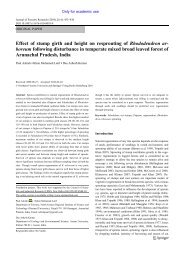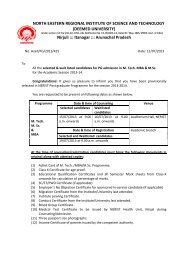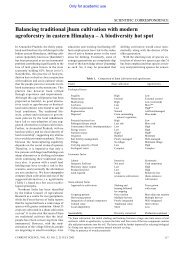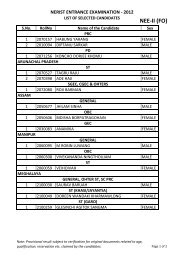Clerodendrum colebrookianum Walp. A potential folk ... - NERIST
Clerodendrum colebrookianum Walp. A potential folk ... - NERIST
Clerodendrum colebrookianum Walp. A potential folk ... - NERIST
Create successful ePaper yourself
Turn your PDF publications into a flip-book with our unique Google optimized e-Paper software.
Asian J Pharm Biol Res |Oct-Dec 2012 | Vol-2 | Issue-4<br />
Table 4: Uses of <strong>Clerodendrum</strong> <strong>colebrookianum</strong> against various ailments by different tribes of North East India.<br />
Disease State Tribe Plant parts Mode of administration References<br />
Abdominal pain Assam Tai-Ahom Leaves Three teaspoonful leaf extract<br />
is mixed with small amount of<br />
Kalita and Phukan<br />
2010<br />
common salt and is taken<br />
thrice daily<br />
Anthelmintic Assam Assamese Leaves - Jain and Saklani<br />
Antidote Nagaland Naga Leaves Infusion of leaves mixed with<br />
bark paste of the “menpan<br />
plant” is drunk<br />
1992<br />
Changkija 1999<br />
Blood purifier Assam Lushai Leaves - Sajem and Gosai<br />
2010<br />
Colics in infants Mizoram Mizo Leaves Juice of 5 ml twice daily Sharma et al. 2001<br />
Cough<br />
Arunachal<br />
Pradesh<br />
Adi, Nishi Leaves - Jain and Saklani<br />
1992<br />
Diabetes Assam Jaintia Leaves Taken raw Sajem and Gosai<br />
2006<br />
Barman<br />
community<br />
Leaves Decoction Das and Sharma<br />
2003<br />
Zeme Leaves Decoction Tamuli and Saikia<br />
2004<br />
Mizoram Mizo Leaves Decoction Sharma et al. 2001<br />
Diarrhoea and<br />
dysentery<br />
Gastric disorders<br />
Arunachal<br />
Pradesh<br />
Arunachal<br />
Pradesh<br />
Adi, Nishi Leaves Juice Jain and Saklani<br />
1992<br />
Dimasa<br />
Kachari<br />
Root Extract Tamuli and<br />
Sharma 2010<br />
Bangni Leaf, tender Decoction or juice Gupta 2006<br />
stem<br />
a<br />
a<br />
b<br />
c<br />
d<br />
e<br />
Figure 1: (a) <strong>Clerodendrum</strong> <strong>colebrookianum</strong> in its natural habitat, (b) flowering, (c) terminal panicle inflorescence with white<br />
flowers, (d) matured fruits and (e) seedling<br />
258



